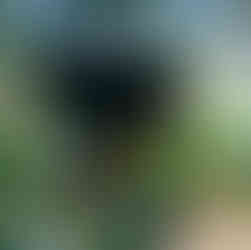Boots on the Ground
- Jackie Skrypnek
- Oct 23, 2022
- 3 min read

I recently heard humans described as an "overabundant, renewable resource" by author, filmmaker, and champion of localization Helena Norberg-Hodge. She was referring to the folly of casting people aside in favour of increasingly energy- and tech-intensive ways of getting things done – and the resulting harm when folks no longer feel resource-ful. Her words, though in some ways stating the obvious, were a mini-revelation to me, bringing immediately to mind the permaculture maxim "the problem is the solution".
To think of humans as a resource – one that is fully renewable, in huge abundance, and widely dispersed – is to see vast potential. We're a species with boots on the ground across the globe, poised for mobilization. What if we were mobilized in the name of earth repair and regeneration; troops engaged to leave big environmental boot prints of greater fertility, diversity, and abundance in our wake?
Now, I know it's not that simple – there are systems-level impediments to earth healing that we need to contend with (patterns of growth, extraction, consumption and so on). But imagine we start right where we each find ourselves; where our boots literally touch the ground, be it a farm/acreage, an urban lot, or a city high rise. A good chunk of our planet is but a patchwork of these privately occupied bits. It may seem insignificant what happens on the surface of your particular yard, but remember: we're a widely distributed resource each atop some patch of earth, large or small. And although that patch may be so paved or levelled or sodded-over so as to make you forget it's our earth at all, it is after all a little bit of planet ready to support life if given the chance.
An entire subdivision and a side yard, both ripe for regeneration
Looked at this way, we might reconsider even the smallest strip of soil suppressed under landscaping rocks or sputtering out a few weeds. Whether you've got acres or nothing but your parking lot median to work with, the idea is to make best use of the sunlight, rainwater, organic matter, and whatever else is available on site to tie that ground back into the living whole that sustains us. You might succeed in restoring a damaged spring or waterway, or renewing habitat on a large scale. But it might just as well mean replacing your lawn with a buffet of hardy plants, watered from your downspout, that feeds you, birds, and insects. Or, to get really granular, you might call it success to simply cultivate a thriving community of soil microbes – they're the basis of earth's health, after all.
This probably sounds like a drop in the bucket, and maybe it is, but it seems doable, right? It's just one way we can mobilize within our own direct sphere of influence and, maybe most importantly, these simple acts take us from being merely consumers to being creators and contributing members of the planet – resources, in fact!
I imagine a kind of silly, anthropomorphized scene in the future where all our residential lands are storing carbon and water and supporting a lush diversity of life, and all the earth's other species are looking around at each other wide-eyed saying, "I didn't think they had it in 'em, but whadya know...". We might be able to shed the notion that the world would be better off without us and know instead that we participated in serving it in a way that only we were poised to do.













I love this, Jackie. Even one square inch of ground each, multiplied by billions of people, would make a difference, for sure. And yes, a mini-revelation here, too, to turn the problem (people!) into the solution (people!) in this way.